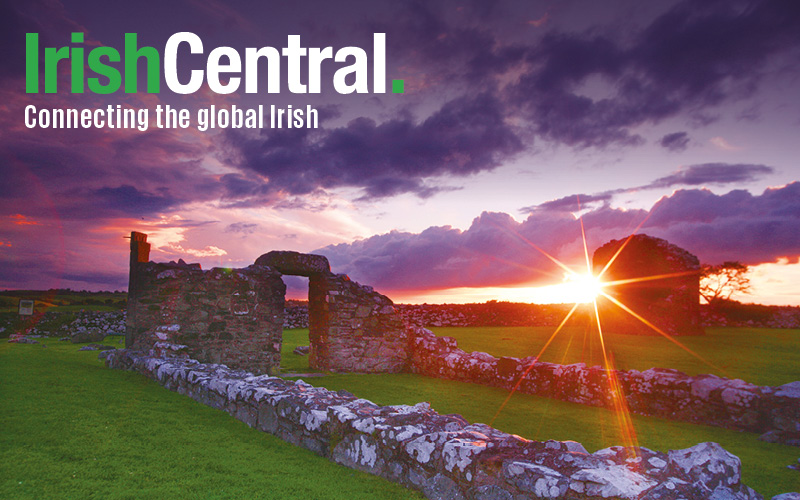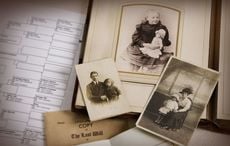The military records of the 50,000 men and women who took part in the Easter Rising and the War of Independence are now available in the newly opened Military Archives at Cathal Brugha Barracks in Dublin.
The files, dating from the 1940s onward, have been moved to the Rathmines archive which was opened by Ireland’s President Michael D Higgins and the Minister for Arts, Heritage and the Gaeltacht, Heather Humphreys, on Tuesday. The archives are the fourth of nine Irish government-funded “permanent reminders” being built for the 1916 commemorations.
The newly released military records offer new information on individuals and incidents in the period up to the Civil War (1922 to 23). Applications for military service pensions have been digitalized and can be accessed online. Although work is still ongoing at the archives anyone can search through the records online.
Released online by the National Archives - Claims for compensation after the 1916 Rising : https://t.co/tZKAtDa5Gr pic.twitter.com/jnvY3ckaef
— Shane Wilson (@shanew147) April 21, 2016
The searchable online database links to summary details of 66,174 files of more than 47,500 applicants, including almost 200 who applied for the 1916 medal. The 1916 Medal recognized those who were engaged in active service during the 1916 Rising and those who served during the period 1917-1921.
Pat Brennan, senior archivist and project manager told the Irish Examiner, “While there are some well-known names included, the series is a great tribute to the sworn membership, the men and women of the IRA and Cumann na mBan who carried out support roles to the active service fighters in both organizations.”
He continued, “The members of Na Fianna Éireann played a valuable part too. Without their contribution, the War of Independence could well have taken a different course.”
Speaking at the launch of the Archives President Higgins referred to the ceremony, which took place at the Barracks, on Tuesday morning, commemorating the centenary of the murder of the pacifist, socialist, suffrage activist and journalist Francis Sheehy Skeffington, and of his fellow journalists Thomas Dickson and Patrick McIntyre. The three men were executed at the Cathal Burgha Barracks, which were then called Portobello Barracks, by a firing squad of seven men under the command of Captain Bowen-Colthurst of the Royal Irish Rifles, without any trial or any charges having been brought against them.
President Higgins officially opens the newly refurbished military archives at Cathal Brugha barracks #1916 pic.twitter.com/VwO7rOeWRs
— Conor Hunt (@conorfhunt) April 26, 2016
He continued, “Injustice also defined the treatment of Hanna Sheehy Skeffington, who suffered the invasion of her house, attempts at blackening her name, and who was refused access to her murdered husband’s personal effects.
“The man bearing responsibility for the horrendous execution, Captain Bowen-Colthurst, was released after a brief hospitalization and awarded a military pension. The fact that one of his victims, Francis Sheehy Skeffington, had been endeavoring to prevent plunder and destruction from spreading as the fighting was unfolding in Dublin City on those early days of Easter Week only reinforces the cruelty of the event.
“Cathal Brugha Barracks are thus a very important place of memory for us – as the site of extra-judicial executions that symbolize the worst kind of arbitrary rule; and, today, as the repository of crucial records of our past.”
The President also noted how personally significant the release of the files was to him and his family as they contain information about his own father, paternal uncles, mother and father’s sisters who were all active in the War of Independence.
Higgins said, “My father, John, enlisted with his brothers in the Ballycar Company of 1st Battalion, East Clare Brigade, during the War of Independence. He went on to serve for most of the period with the 3rd Battalion, Charleville, in the Cork no.4 Brigade. My mother was Vice-chair of Cumann na mBan in Liscaroll, and her brother was adjutant of the local Battalion. My father’s sister was in Cumann na mBan in Ballycar, Co. Clare.
“The Civil War divided my father’s family. My uncle Peter was in the National Army; he took part in the handover and served in Renmore Barracks, Galway. My father spent part of the year 1923 as an internee in what was known to the prisoners as Tintown, in the Curragh camp. The Pension files record his long and exhausting battle for a small pension, which was eventually granted in 1956, almost 22 years after his first application in 1935.
He added that “the Pensions files tell many personal stories of hardship, as so many who fought for Irish Independence then struggled to support themselves and their families in the subsequent decades, and as some found themselves excluded from the pension scheme, because of their gender, class or political choices.”
Minister Humphrey added, “The collections in the Military Archives, which stretch from 1913 to the present day, are a key part of our documentary heritage, allowing historians, academics and anyone who is interested in our shared history to understand our past more clearly and explore the nation's family history.”
For more information visit www.militaryarchives.ie.
Here’s some raw footage from British Pathe from 1916:




Comments